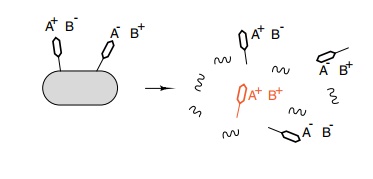Chapter: Genetics and Molecular Biology: Genetics
Genetic Recombination
Genetic Recombination
Genetic
crosses between two strains, each containing a mutation in the same gene, are
occasionally observed to yield nonmutant, that is, wild-type, progeny. This is
the result of a crossover in which the two parental DNA molecules are precisely
broken, exchanged, and rejoined.

This
section describes phenomenon of recombination and the next section describes
experiments that make use of recombination to order genetic markers on
chromosomes.
Alignment
of the pairs of homologous chromosomes during meiosis has long been known
through observations with light microscopes. The subsequent movement of
visually identifiable sites on the chromosomes suggested that homologous
chromosomes were broken and portions exchanged in a process called crossing
over or recombination. Although recombination was first observed in eukaryotic
cells, it appears to be almost ubiquitous. Even simple bacterial viruses can
engage in genetic

Figure
8.7 Co-infection of a single cell by
phage of two different genotypespermits recombination to produce output phage
of wild type in addition to output phage of the parental types.
recombination. The bacterial phage experiments were
particularly im-portant to the development of the field because phage provided
a simple and small system with few variables, a high sensitivity for
recombinants, and a very short generation time. These properties permitted many
experiments to be done rapidly and inexpensively.
Phage mutants can easily be isolated that yield
plaque morphologies different from the normal or wild-type. This is done simply
by plating mutagenized phage on cells and locating the occasional different
plaque. Nonsense mutations in essential phage genes may be identified as phage
that grow only on nonsense-suppressing host cells. Genetic recombination
between phage can be revealed by co-infection of cells with two mutants at a
sufficiently high multiplicity of infection that each cell is infected with
both types of phage (Fig. 8.7). Some of the progeny phage are found to carry
alleles from both of the input phage! Since the phage carry only one DNA copy,
such progeny have to be recombinants carrying some of the genetic information
from each of the parental phage types. The discovery of genetic recombination
in phage by Del-brück and Hershey opened the way for intensive study of the
phenome-non of genetic recombination at the molecular level.
Related Topics